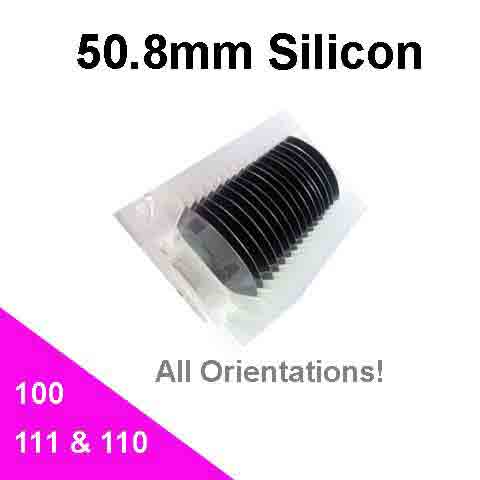Just Some of our Silicon Wafer Inventory
Please click the images to purchase online 25.4mm - 300mm bare, with thermal oxide or nitride.
Who Makes the Best Silicon Wafers?
Who Makes the Best Silicon Wafers in the World? This question is a common one. There are many companies that produce semiconductor-grade silicon wafers, but few are truly leaders in their field. These companies are often dependent on large volumes of silicon. Some of these firms are more successful than others, but there are a few key differences that you need to understand. The company with the most technologically advanced wafer production processes is SUMCO.
A few of the biggest names in the semiconductor industry produce silicon wafers, including GlobalWafers, Xilinx, and Infineon Technologies. These companies compete in the global market for these wafers, and they are ranked by market share. If you are looking to buy silicon nitride wafers, check out these companies. If you are in the market for these products, you can't go wrong with any of them.
GlobalWafers: This Taiwanese semiconductor company is located in a boxy off-white office building. The workers are adorned in colorful protective suits. You can also see "claw machines" - named after the arcade game, which hauls nine kilograms of silicon wafers. These machines are designed to extract individual silicon wafers, and each one must undergo six to eight weeks of testing before they're ready to be carved into individual chips.
Who Makes Silicon Wafers in the United States?
It is unclear who makes silicon wafers in the United States, but the answer lies in the semiconductor industry. Today, Asia produces three-quarters of the world's semiconductors, while the United States produces just 13 percent.
The Senate has passed a bill that authorizes $52 billion in subsidies for new factories. One company that employs hundreds of people in Albany, New York, is GlobalFoundries. The company runs twenty-four hours a day and pumps out 500,000 silicon 'wafers' a year. It then cuts those silicon wafers into chips.
The process of making a silicon wafer requires a variety of processes. High-purity silicon is obtained through the synthesis of silica or silicon metal. Then, the silicon ingot is sliced into wafers. The final product is known as a monocrystalline silicon wafer or epi-crystalline silicon, which is suitable for a variety of applications including computer chips and photovoltaics.
In order to make a semiconductor, the material must not be an excellent conductor of electricity. The most common types of semiconductor material are silicon, germanium, gallium arsenide, and silicon carbide. These materials are fabricated into thin-films, modules, and solar cells. These wafers are available in several sizes, and can be customized based on your specifications. The thickness of the silicon wafers varies from one ohm to 30 ohms.
On-chip multiplexed single-cell patterning and controllable intracellular delivery
Scientist have purchased the folllowing silicon wafers for their research below. Please contact us for pricing.
The silicon chip was fabricated based on silicon anisotropic wet-etching with six major steps (see Fig. S5). A silicon wafer (crystal plane (100), DSP, 300 μm thick, purchased from University Wafer) was coated with a 100 nm-thick SiO2 film by PECVD (Plasma Therm 790), followed by standard photolithography (EVG 620, EVG group Inc, NY) and reactive ion etching (RIE, CF4). An etching film mask (SiO2) with a square array pattern (side length: 1 mm) was used on one side of the silicon wafer (denoted back side). The silicon area without protection, including the top side, was etched in a 45% potassium hydroxide (KOH) bench tank at 80 °C. The stop time was accurately controlled, ensuring that the thickness in the central area (square region) was thinned to ~35 μm. Then, the back side was coated with another 100 nm-thick SiO2 film by PECVD for etching protection. A thin metal layer (Cr/Au, 30 nm/100 nm) was coated on the top side of the silicon chip by E-beam evaporation. The pattern of the microsquare array (side length: 50 μm, center-to-center distance: 75 μm) was transferred to the Cr/Au metal layer by selective etching with chromium etchant (CR-7S, Cyantek Com., CA, US) and gold etchant (GE-8111, Transene Company Inc., MA, US). Using Cr/Au as the top side mask, we etched the top side using KOH wet etching to forming the pyramid pit array. The size of the opening at the bottom of the pyramid pit was controlled by the stop time. Finally, the Cr/Au layer was removed. A scanning electron microscope (Hitachi S-3000) was used to characterize the morphologies of the fabricated microchannel arrays, as well as the sizes of the open pores.
